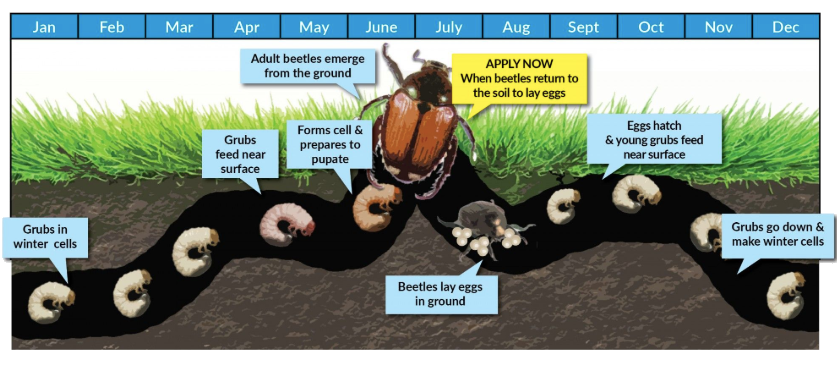FAQs
Before deciding which company will care for your lawn, you should get the facts...
How much nitrogen does my lawn require?
The old adage of, “if a little is good, more must be better” does not apply in the care of turf. The recommended rate of nitrogen on a lawn is 4 lbs per year, per 1000 sq. ft. Applying more than the recommended rate does more harm than good; over-applying fertilizer promotes many problems in turf., including
- The risk of burning (the least of problems associated with over applying fertilizer)
- The risk of promoting several different diseases; these can be very difficult to control.
- The risk of unwanted insects (brought on by disease) that would normally have little impact on healthy turf can now cause severe damage.
Pro-Care lawn specialists will determine exactly what your lawn needs and apply the right amounts at the right time.
What is "Core Aeration"?
Aeration is the removal of small cores of soil; this helps to loosen compacted soil and allows air, moisture and fertilizer to penetrate down to the root zone.
At what height should I set my lawnmower?
The quick answer is: it depends on the type of grass, the season, and the growing conditions. Many people like their to cut their grass really short. However, a thick lawn, mowed to a height of roughly 3 1/2 inches, can resist weeds more effectively.
Thin lawns mowed shorter than 3 1/2 inches will dry out quicker and easier, thus leaving open the possibility for creation of bare and open areas. These areas are more susceptible for weed seeds to take hold. Good lawn care practices – like mowing to the proper height and following a regular fertilization and weed treatment program – will help to maintain your lawn properly, maximizing its health and ensuring an enviable appearance.

What are white grubs?
A typical lawn grub is a white, ‘C’-shaped larva of a beetle about a half-inch in length. A grub may be the larvae of the masked chafer, European chafer (pictured), Japanese beetle or other beetle species. Grubs can be devastating not only in the damage they can do, but also the damage from the predators that are attracted to them. Grubs are a favorite food source for skunks, raccoons and crows. No matter the species, they can really wreak havoc on a lawn! (See image above.)
How can I tell if my lawn has grubs?
Your first suspicion might be the subtle signs of numerous Japanese beetles flying by, or perhaps a few brown patches with loose turf. Grab a handful of grass and gently lift up on the sod. If you have the pests, you should be able to see them. Also, If the turf easily pulls away from the ground, the root system may have been eaten by grubs.
Do you accept credit cards?
Yes, we accept Visa, Mastercard and Discover.
Can I pay my bill online?
Beginning in March of 2022, you will be able to access your account and pay invoices online using the “Payments” link at the top of the page.
